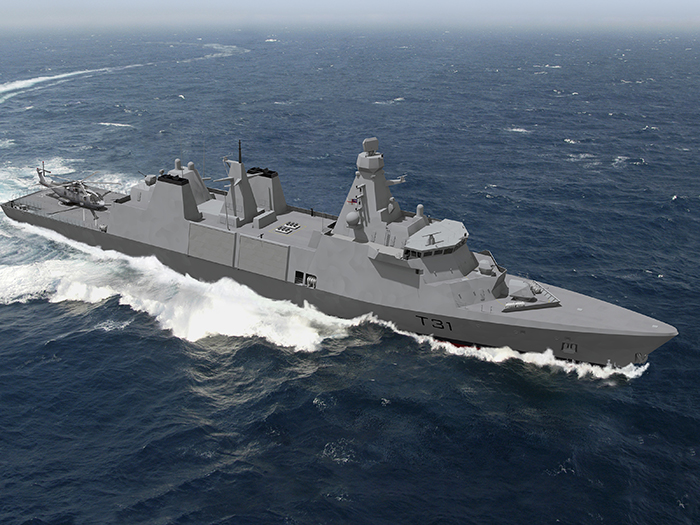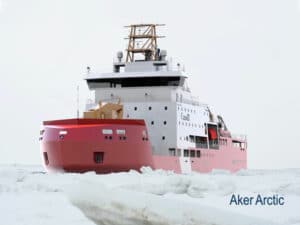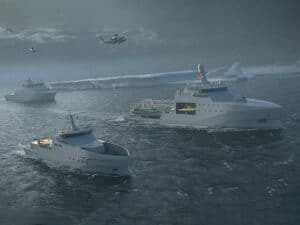
U.K.’s Type 31 frigates to have MAN Alpha propeller systems
Written by Nick Blenkey
Rendering of the Type 31 general-purpose frigate design
MAN Energy Solutions has won the contract to supply propeller equipment for five general-purpose frigates to be constructed for the U.K. Royal Navy by Babcock International Group.
Each 138.7 meter twin screw vessel, rated at more than 16,000 kW per shaftline, will be equipped with well-proven MAN Alpha VBS Mk 5 C.P propeller systems, and all related equipment. The propeller configuration will be designed and supplied by MAN Energy Solutions’ design and production facilities at Frederikshavn, Denmark.
Construction of the vessels will take place at Babcock’s Rosyth, Scotland, shipyard.
The design of the Type 31 is based on Odense Maritime Technology’s (OMT) industry-proven Iver Huitfeldt class hull form, which is currently in service with the Royal Danish Navy.
Graeme Thomson, Programme Director Type 31, Babcock said “We are delighted to welcome MAN to the Type 31 supply chain as the preferred supplier for the propeller equipment.”
“We are well-known in the naval segment but securing this frigate contract, along with our ability to comply with the Royal Navy’s comprehensive naval requirements, allows us to further showcase our expertise,” said Poul Knudsgaard, Head of MAN PrimeServ Four-Stroke Denmark, MAN Energy Solutions Site Frederikshavn. “The complexity and strict performance criteria demanded by this order make it an excellent reference for MAN Energy Solutions.”
Michael Muff Jensen, Sales Manager, MAN Energy Solutions Frederikshavn, said: “We are very happy to play such an important role in the Type 31 programe. Complex projects like this call for a high level of professional collaboration – and Babcock has been a pleasure to work with. From a propulsion perspective, we believe the preferred propeller solution is spot on when it comes to performance, efficiency and durability.”
The new vessels will feature a combined diesel and diesel (CODAD) propulsion system, integrating four diesel engines (twin in – single out), two C.P. propellers and two asymmetric shaft lines. The installed power plant will have the capacity to produce a maximum power of over 32,000 kW.
The propulsion system will ensure a low underwater-radiated noise (URN) signature and will comply with IMO Tier III regulations. It will also enable each vessel to attain a maximum speed of more than 25 knots.




